May 17, 2025 | 06:05 GMT +7
May 17, 2025 | 06:05 GMT +7
Hotline: 0913.378.918
May 17, 2025 | 06:05 GMT +7
Hotline: 0913.378.918
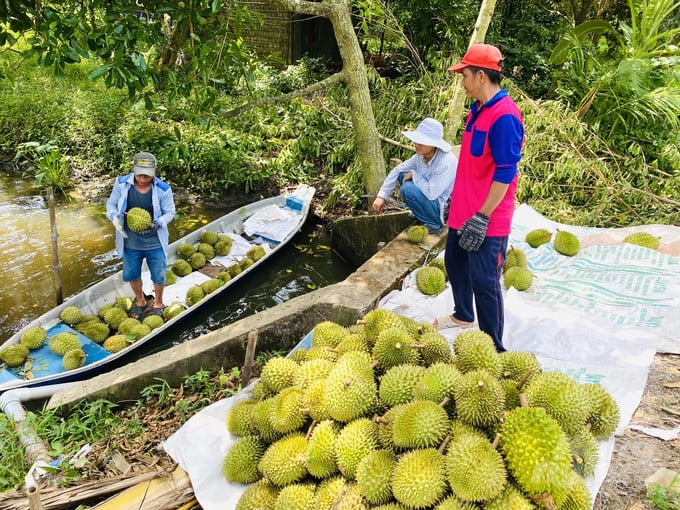
Traders buy durian. Photo: Nguyen Thuy.
According to the Ministry of Agriculture and Rural Development, from 2016 to 2022, the total durian area in the country increased from 32,000 hectares to more than 112,200 hectares. The average durian yield increased slightly from 14.7 to 15.7 tons/ha. In particular, durian increased significantly, from 366,000 tons to more than 863,000 tons (up 11.7%/year).
In 2023, the country's durian area reached about 131,000 hectares, an increase of 20% compared to 2022, and output reached nearly 1.2 million tons, an increase of 3.5% compared to 2022.
Currently, 34 provinces and cities are growing durian in the country. Of these, they are concentrated in 4 regions: Central Highlands (accounting for 47% of the country's area), Mekong Delta (30%), Southeast (19%), and South Central Coast (4.2%). Four provinces, Dak Lak, Lam Dong, Tien Giang, and Dong Nai, have an area of over 10,000 hectares and an output of over 50,000 tons/year.
The two main varieties include Ri6 and Dona. Among them, the Ri6 variety is popular in the Mekong Delta provinces. The Dona variety is used more in the Central Highlands (accounting for 60 - 70% of the area structure).
Vietnam has many advantages regarding natural conditions and a favorable climate for growing durian. Durian harvest season is all year round, making Vietnamese durian more competitive than Thailand (harvested from May to August). The primary durian season in the Mekong Delta is harvested from April to August; The Central Highlands harvest from July to October; the Southeast region from April to July; and the off-season in the Mekong Delta from October to March of the following year.

From November 2023 to February 2024, durian prices increased because there were only durians from the Mekong Delta provinces. Ri6 durian price was from VND 120,000 - 150,000/kg; Dona durian price was from VND 140,000 - 190,000/kg. Photo: Nguyen Thuy.
According to the Ministry of Industry and Trade, durian prices fluctuate widely according to domestic consumption demand and favorable exports. Prices do not fluctuate much for durians in the primary season from April to September. However, durian prices fluctuate enormously during the off-season months from January to March.
Mr. Vu Duc Con, Deputy Director of the Department of Agriculture and Rural Development of Dak Lak province, Chairman of the Dak Lak Durian Association, said that in recent times, the Ministry of Agriculture and Rural Development, central and local agencies have focused on directing, remove difficulties and promote the development of the durian industry. In addition, the business community and farmers are responsible for building technical processes, improving quality, and building brands, trademarks, and reputation of Vietnamese durian in the international market. Therefore, durian prices on the market increased last year, helping farmers and businesses improve their income and stabilize production.
However, Mr. Con acknowledged that the durian industry still faces many difficulties and challenges. For example, durian production areas are still small, there is no sizeable raw material area, the technical level of farmers is lacking, and the mindset of professional product production is weak according to the importing country's regulations. The connection between representatives of growing areas, export units, and people is not open, transparent, clear, and unsustainable.
The Deputy Director of the Department of Agriculture and Rural Development of Dak Lak province said that in the coming time, the locality will complete the Project on developing the durian and avocado industry in the period of 2025 with a vision to 2030 and submit it to the Provincial People's Committee for approval and implementation. In particular, priority should be given to developing it into a specialized farming area to facilitate the application of mechanization and product consumption. Also, information about durian planting planning should be disseminated through media channels to update farmers.
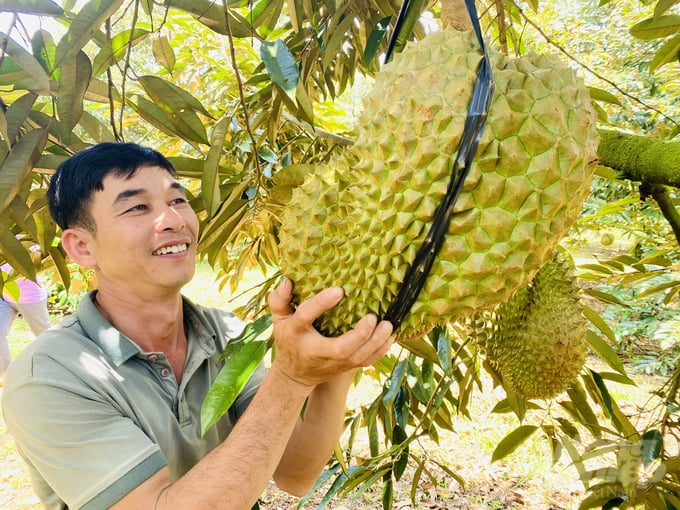
Many farmers in the Mekong Delta, Dong Nai, and Dak Lak have become billionaires thanks to the growing quality of durian. Photo: Nguyen Thuy.
Vietnamese durian has set a breakthrough growth record, becoming the "king of fruit" of Vietnam, with an export turnover of US$ 2.2 billion. The main export markets are China, Japan, Australia... mainly fresh and frozen fruit.
In particular, the advantage of being close to the world's largest consumer market - China helps reduce logistics costs. In addition, the impact of the Red Sea crisis causes goods from other countries to enter the Chinese market to face many difficulties in terms of time, transportation, and costs. Vietnam has signed 17 free trade agreements with many preferential tax rates. This is a competitive advantage for durian and Vietnamese fruits and vegetables when exporting to the Chinese market.
According to data from the General Department of Customs, in 2023, China spent over US$ 6.7 billion (over 1.4 tons) to import durian. Of which, from Thai durian was about 928,000 tons (over US$ 4.5 billion); from Vietnam was nearly 494,000 tons (over US$ 2.1 billion); from the Philippines was over 3,700 tons (US$ 13.2 million).
Currently, the Ministry of Agriculture and Rural Development is negotiating with India to export durian officially and is negotiating to export frozen durian to China. Thus, the room for durian export is very large. However, to dominate the market, quality is still the decisive factor.
Translated by Tuan Huy
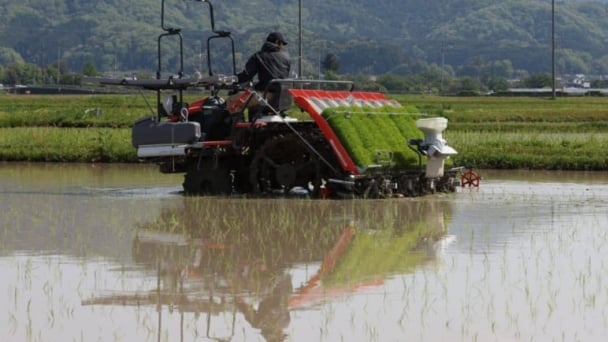
(VAN) Japan's efforts to lower the price of rice through the release of its stockpile may finally be making some progress, albeit at a snail's pace.

(VAN) U.S. tariffs are not only a 'shock', but also an opportunity for Vietnamese businesses to renew their mindset toward comprehensive development.
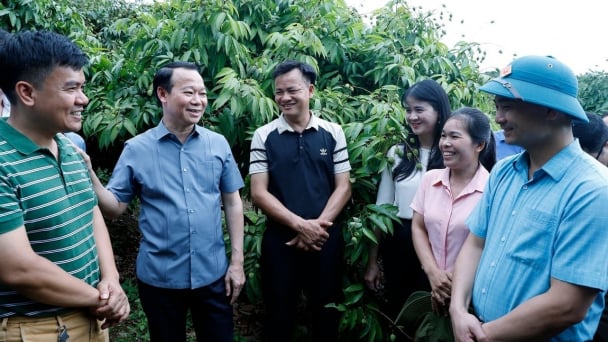
(VAN) As Bac Giang lychee enters the harvest season, Minister Do Duc Duy expects that the fruit will contribute greatly to agricultural exports due to standardized production and deep processing.
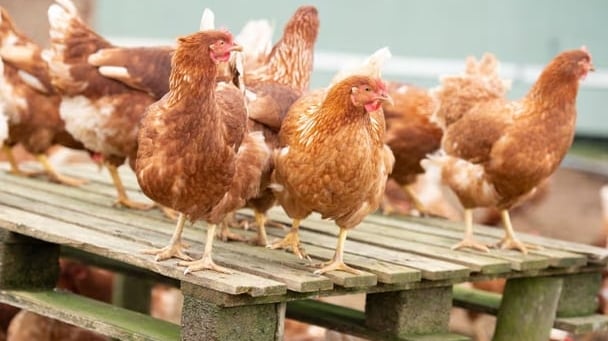
(VAN) Consumers have shown a preference for free-range eggs, but those farming systems are more vulnerable to biosecurity risks like bird flu.
/2025/05/09/5701-1-184335_301.jpg)
(VAN) Vietnam’s eel exports nearly doubled thanks to a mud-free farming model, opening up new prospects while still facing numerous barriers related to international standards.
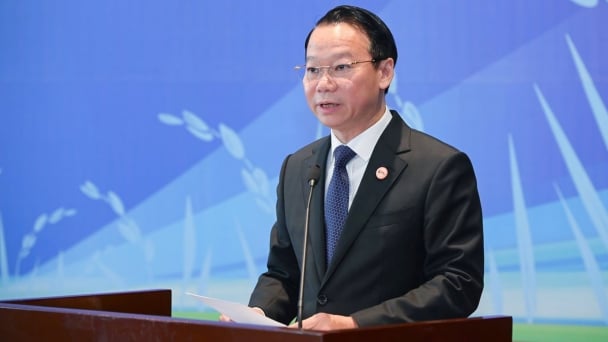
(VAN) Minister Do Duc Duy warned that if production is not professionalized and supply chains are not transparent, the U.S. market could become a growth bottleneck.
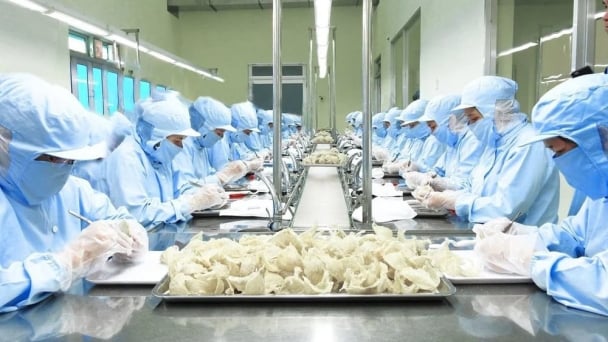
(VAN) Delegating surveillance responsibilities to local authorities is a cost-saving and efficiency-boosting measure that removes a key bottleneck for enterprises, according to Director General Duong Tat Thang.